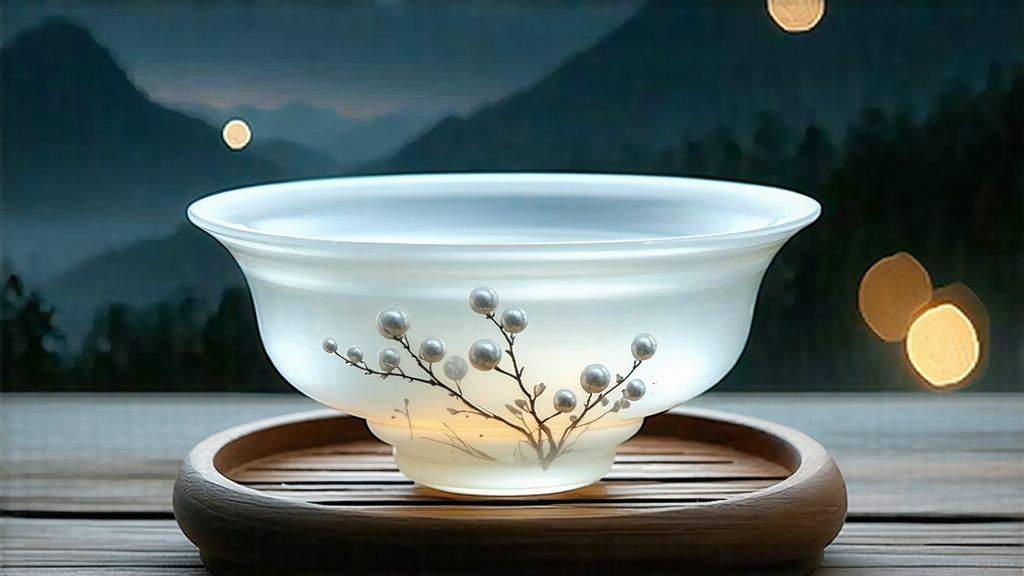
Among the six great families of Chinese tea, white tea is the least theatrical yet the most elusive. It is not rolled, not roasted, not twisted into dramatic shapes; instead it is simply allowed to be. Of its minimalist triad—Silver Needle, White Peony, and Shou Mei—Silver Needle (Bai Hao Yin Zhen) stands as the aristocrat: the first flush of a single downy bud, plucked only during a handful of mist-cool mornings in early spring. To understand China’s oldest recorded tea genre, one must begin with this pale, luminous arrow of leaf and silence.
Historical whispers
The Tang dynasty (618-907) already spoke of “white” tea, but the reference was to the colour of the liquor, not a processing style. True white tea as we know it—air-withered and sun-kissed—emerged in Fuding county during the late Song (960-1279). By the Qing (1644-1911) it had become a tribute item, couriered northward in lead-lined chests to satisfy the Manchu court’s craving for delicate aroma. Export records from 1856 list Silver Needle among the gifts presented to Russian tea caravans, its price pegged to equal-weight silver, hence the name. Foreign diplomats called it “Chinese ivory tea,” assuming the buds were some exotic grain rather than Camellia sinensis.
Micro-terroir: one county, two townships
Authentic Silver Needle is geographically locked to northern Fujian: Fuding and neighbouring Zhenghe counties, where granitic soils, 80 % relative humidity and a maritime monsoon create a diurnal swing of 10 °C even in April. The cultivars matter as much as the postcode: Fuding Dabai (Big White) and Zhenghe Dabai develop extra-long buds—2.5 to 3 cm—laden with amino acids and a velvety pubescence that reflects light like frost. Attempts to replicate the tea in Yunnan or Guizhou yield broader, darker buds whose steeping lacks the signature lychee-pear lift.
Plucking ritual: the two-day window
Harvest begins when the last spring frost is judged to have passed and the buds have reached “fish-hook” curvature—still unopened, yet swollen enough to detach with a soft click. Pickers work barefoot so as not to bruise the bush, nipping only the apical bud into shallow bamboo baskets lined with banana leaf. By 9 a.m. the sun is too fierce; by afternoon the dew has burned off, oxidases awaken, and the enzymatic ballet can no longer be slowed. Thus the entire county operates on a dawn timetable that feels more like a vineyard harvest than a tea one.
Crafting nothing: the art of negative intervention
Once back at the shed, the buds are spread one layer thick on perforated bamboo trays called “water screens.” For the next 36–48 hours they will experience only moving air—first natural breeze, then gentle warmth from a charcoal pit set two metres below. No tossing, no pan-firing, no rolling. The goal is to coax the leaf into surrendering 70 % of its moisture while keeping the cell walls intact. Master witherers read the tea’s respiration by scent: when the grassy top-note subsides and a faint honey note appears, the buds are moved to a low-temperature dryer (40 °C) for final “foot-setting,” reducing moisture to 5 %. The entire process consumes only 1.5 kWh of electricity per kilogram—less than it takes to bake a cake—yet demands a lifetime of sensory calibration.
Grades & vintages
Unlike most Chinese teas that deteriorate after eighteen months, Silver Needle is deliberately aged. New buds taste like dewy melon; at three years the cup turns deeper gold, developing marzipan and camphor; at seven it enters a medicinal register prized by Traditional Chinese Medicine for “clearing heat.” Connoisseurs therefore speak of “vintage” Silver Needle the way oenophiles speak of Bordeaux. The top commercial grades are:
- Imperial: 100 % buds, 1:1 bud-to-silver ratio by visual count, harvested before Qingming festival.
- Heritage: same pluck standard but from 40-year-old un-pruned bushes.
- Cave-aged: stored in Fuding’s old military tunnels at 25 °C, 65 %